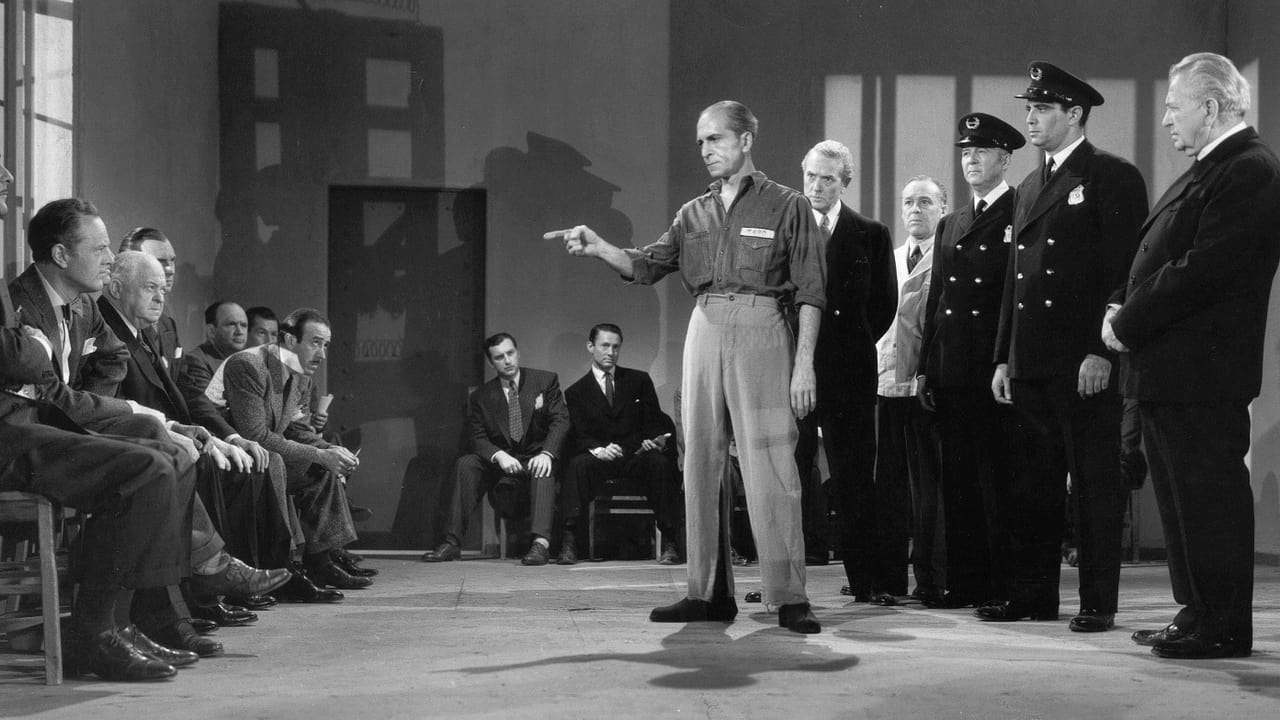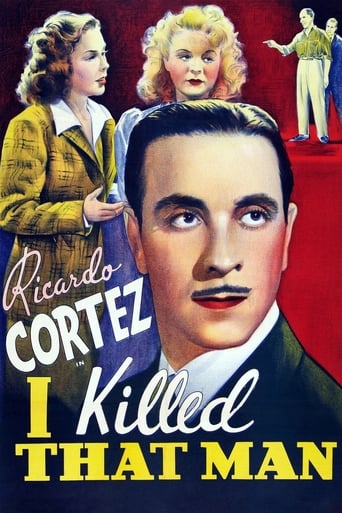

Lack of good storyline.
... View MoreBoring, over-political, tech fuzed mess
... View MoreIt's hard to see any effort in the film. There's no comedy to speak of, no real drama and, worst of all.
... View MoreClose shines in drama with strong language, adult themes.
... View MoreRicardo Cortez (Phillips), Joan Woodbury (Geri), Iris Adrian (Vern Drake), George Pembroke (King), Herbert Rawlinson (warden), Pat Gleason (Bates), Ralf Harolde (Nick Ross), Jack Mulhall (Collins), Vince Barnett (drunk), Gavin Gordon (Reed), Harry Holman (Lanning), John Hamilton (district attorney), Arthur Gardner.Director: PHIL ROSEN. Screenplay: Henry Bancroft. Story: Leonard Fields, David Silverstein. Photography: Harry Neumann. Film editor: Martin G. Cohn. Art director: Frank Dexter. Music: Johnny Lange, Lew Porter. Associate producer: Frank King. Producer: Maurice King. Copyright 28 November 1941 by Monogram Pictures Corporation. No recorded New York opening. U.S. release: 28 November 1941. 8 reels. 71 minutes. SYNOPSIS: A convicted killer is murdered on his way to execution.COMMENT: It's indeed remarkable that a Monogram movie would even aspire to contribute to a list of the One Hundred Greatest Moments in the Cinema, but the first ten minutes of this film — gripping, enervating, horrifically fascinating — certainly belong in such a collection. Admittedly, once the premise is set, the story turns into a fairly routine if brightly characterized and reasonably suspenseful murder mystery. Director Rosen pulls all stops out for his introductory sequences, but is then content to coast along, leaving it to his adept players to keep interest perking. True, no-one could surpass Ralf Harolde's opening bid, but Joan Woodbury, Iris Adrian and ever-reliable Ricardo Cortez give it a game try.
... View More***SPOILERS*** While on his way to be executed for murder the tight lipped convicted murderer Nick Ross, Ralf Harolde,finally opens up his big mouth and goes on talking endlessly in how he was railroaded by his un-named boss into the electric chair and now he's going to tell the whole world who that man is! It's then that Ross suddenly goes into cardiac arrest and drops dead in front the some dozen hand picked witnesses who are there to withes his execution.Assistant D.A Roger Phillips, Ricardo Cortez, who prosecuted the case and was one of those who witness Ross' unexpected demise, with a poison dart shot in his neck, and is determined to find his murderer and goes about it by laying a number of red herrings as to draw Ross' murderer out into the open. it's Ross' girlfriend Verne Drake, Iris Adrian,who becomes the killer's next victim when driving her car as she honks her horn to avoid hitting someone and suddenly drops dead with crusader against the death penalty J. Reed, Gavin Gordon, as her passenger! It turns out that the murder weapon in both Ross & Verne Drake's deaths was a poison dart shot from close range at them!***SPOILERS***The movie lumbers along until some secret code is broken by woman reporter Geri Reynolds,Joan Woodbury, who after exposing the killer is left at his mercy until Assistant D.A Phillips and a squad of New York's Finest brake into his office and finally apprehend him.The killer himself had covered his tracks by having everyone working for him murdered but left a major clue, a library book on poisons, that finally exposed him to the police and D.A's office. P.S "I Killed That Man" was in fact the very first shown in the theaters movie to be broadcast, three years after it's release, on public TV being broadcast on New York's WNTB Channel 1 on August 7, 1944 at a time when there was less then 1,000 people in the US who owned a TV set!
... View MoreOn his way to receive a final toast - in the electric chair! - condemned Ralf Harold (as Nicholas Ross) pauses to let the assembled witnesses know he's going to give away the identity of a fellow criminal. But, just as he is about to reveal the crook's name, Mr. Harold is stricken by a deadly poison dart. District attorney Ricardo Cortez (as Roger Phillips) and attractive "Chronicle" reporter Joan Woodbury (as Geri Reynolds) sift through the suspects, banter romantically, and try to solve the murder. You've seen this kind of picture before, but the tired storyline in "I Killed That Man" is enlivened by its cast and crew.Director Phil Rosen and his star, Mr. Cortez, were silent screen veterans (they'd worked together) who found less success after the advent of talking motion pictures; but, their skills are clearly evident, as they make the most of this quickly produced, low-budget film. Today, Mr. Rosen is not well-remembered; but, he worked on some of the most important Hollywood films of the teens and twenties (many are lost). Cortez reached a popularity peak in 1926, after working on films with Greta Garbo and D.W. Griffith. The supporting cast does very well, and Ms. Woodbury is a thoroughly charming leading woman.****** I Killed That Man (11/28/41) Phil Rosen ~ Ricardo Cortez, Joan Woodbury, George Pembroke
... View MoreThis is a mystery with elements of comedy. It also has (minor) noir elements and a romantic touch.Ricardo Cortez is excellent in the lead. We begin as a man is about to be put to death in prison. The press and the law are there, as well as a few others who like to observe executions.Things do not go as planned. And Cortez tries to solve the mystery right on the spot. That doesn't work. His girlfriend, reporter Joan Woodbury, gets involved. Iris Adrian is, as always, effective as a moll.This sort of thing continued to be standard fare at Warner Brothers till the mid-forties. Interestingly, Monogram does it even better here. The list of players boasts only Cortez as a box-office name. But it's cast in a clever and entertaining manner and neatly directed by Phil Rosen.
... View More